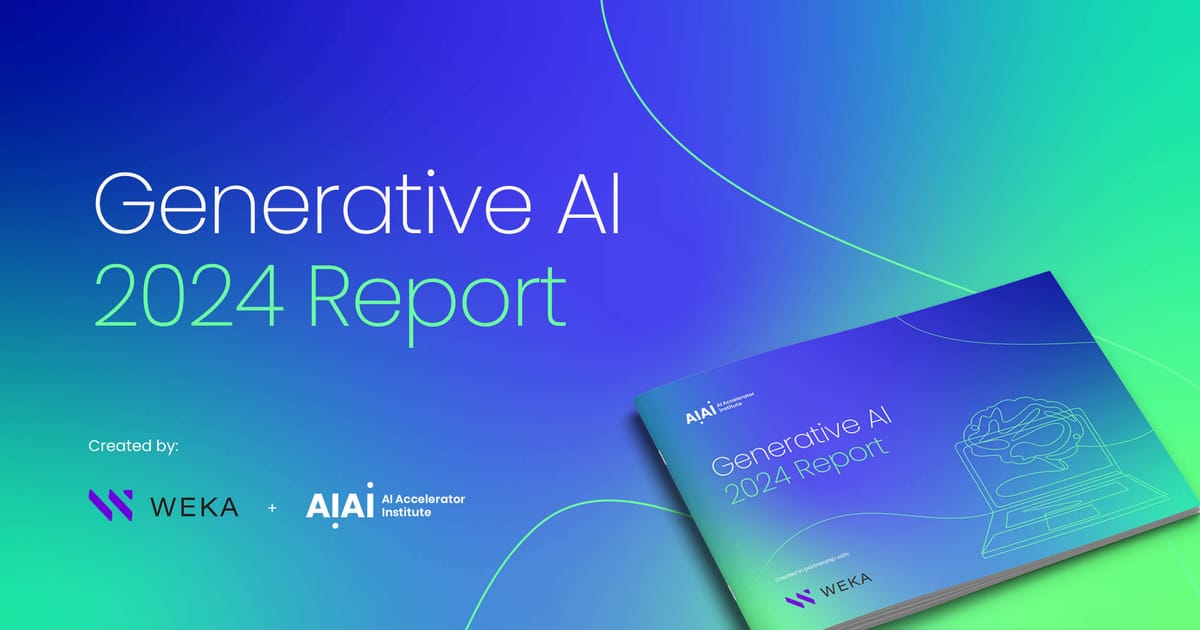This year, only 2.1% of respondents in our Generative AI Report said they don’t use generative AI tools; this represented a decline from last year’s value of 11.8%, and we were interested in knowing what was behind this choice and this drop.
This significant drop suggests a variety of important underlying factors, such as increased awareness and understanding, broader accessibility, proven effectiveness and ROI, peer influence and industry trends, the evolution of technology, and cultural and organizational shifts.
- ChatGPT
- OV
- Matlab
- Ansys
- Gemini
- LLama
- Midjourney
Create our own internally - 33.4%
Lack of interest - 33.3%
Irrelevance - 33.3%
There was an even distribution of why respondents said they don’t use generative AI.
The choice to develop AI tools internally could mean there’s a preference for using customized solutions tailored to the specific business. This can be driven by worries over control or wanting to keep proprietary systems.
Respondents also indicated a lack of interest as a reason for not adopting external generative AI tools. Potentially originating from a perceived lack of clear advantage or understanding of how these tools could benefit their specific operations, this decision points to a possible gap in awareness.
Similarly, there’s a perception that generative AI tools are irrelevant to operations, meaning there could be a disconnect between AI technologies' offerings and potential users' needs or understandings.
With all non-users of generative AI stating they’d be willing to use the tools in the future, this points to essential insights about perceptions and the evolution of technologies.
Generative AI tools are being broadly accepted and have a positive outlook, meaning they’ve proven their value and have managed to convince even previously hesitant individuals or companies of their potential benefits.
There’s also a marked potential for widespread implementation of these tools across more varied sectors and tools as more non-users adopt the technology. We might see generative AI even more extensively integrated into business operations, potentially leading to a new wave of digital transformation.
Generative AI 2024: Key insights & emerging trends
Download the Generative AI 2024 Report for in-depth analysis on top tools, user benefits, and key challenges shaping the future of AI technology.

The respondents highlighted the tools below as ones they’d consider using:
- Task-dependent
- LLaMa3
- Matlab
- OV
- Ansys
The general consensus about the use of generative AI
We wanted to know the opinion of the respondents’ companies about generative AI.
For - 33.3%
Neutral - 66.7%
The majority of respondents (66.6%) indicated that their companies hold a neutral opinion about generative AI, with some (33.3%) also stating that their company has a favorable outlook.
The prevalence of this neutral view could suggest that many companies are still assessing the potential impacts and benefits of generative AI without yet committing fully to its adoption.
Similarly to last year, there’s an absence of opposition, implying a potential open-minded attitude about generative AI and perhaps even its future adoption.
We wanted to know how much those who don’t use the technology trust it. Perhaps surprisingly, not everyone who said they’d use the technology in the future also said they trusted it.
Yes - 72.8%
No - 27.2%
The level of trust (72.8%) in generative AI tools remained the same as last year, continuing the trend of not everyone who said they’d use the technology in the future also trusting it.
Mostly positive - 33.3%
Mixed - 66.7%
The majority of respondents (66.7%) see the impact of the tools as mixed, which could suggest a nuanced understanding of the technology’s benefits against its challenges. This view could stem from the awareness that, while driving innovation and efficiency, generative AI has the potential to pose risks in ethics and bias.
How do you envision the role of generative AI evolving in your industry?
All non-users of generative AI view its role as a supplementary tool, which could underline that while having its uses, it’s not vital for core business operations. This could point to an opportunity for developers to educate and demonstrate AI’s broad benefits and capabilities.
Potential misuse of personal/generated data - 33.4%
Lack of transparency in data usage - 33.3%
Other - 33.3%
Potential misuse of personal/generated data and lack of transparency in data usage are equal concerns for non-users of the technology. It could indicate the fear of personal data being mishandled by AI systems or third parties.
How data is used also needs to be fully addressed; transparency over how data is used, handled, and stored by AI systems needs strong policies and regulations on data governance, which need to be properly communicated by AI providers.
Those who answered ‘other’ didn’t specify.
Download the full report to see why and how end users and practitioners are using generative AI tools.

#2024, #Accessibility, #Adoption, #Ai, #AISystems, #AiTools, #Amp, #Analysis, #Awareness, #Bias, #Business, #Companies, #Data, #DataGovernance, #DataUsage, #Developers, #DigitalTransformation, #Driving, #Efficiency, #Ethics, #Evolution, #Fear, #Full, #Future, #FutureOfAI, #Gap, #Generative, #GenerativeAi, #Governance, #How, #Impact, #Impacts, #Industry, #Innovation, #Insights, #It, #OPINION, #Other, #Outlook, #Perception, #PersonalData, #Policies, #Regulations, #Report, #Risks, #ROI, #STEM, #Technology, #ThirdParties, #Tool, #Tools, #Transformation, #Transparency, #Trends, #Trust, #View, #Wave
Published on The Digital Insider at https://is.gd/2rvOrN.
Comments
Post a Comment
Comments are moderated.